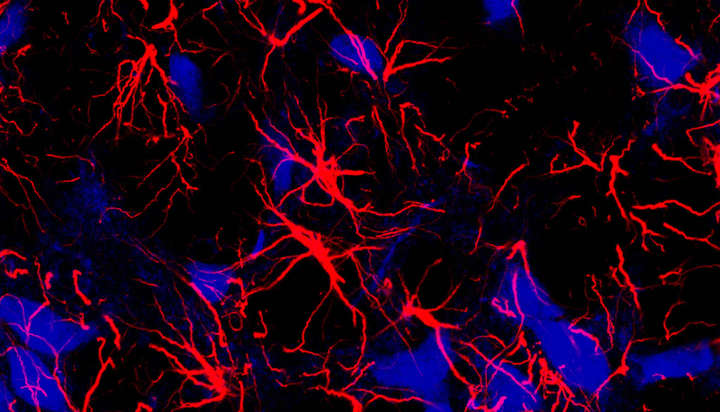A previously unknown function of astrocytes brings a new approach for neuroscience researchers that could ultimately lead to treatments for disorders like epilepsy, Alzheimer’s, and traumatic brain injury, scientists report. Astrocytes are glial cells in the brain that communicate with neuronal synapses, cleaning up glutamate and potassium from the extracellular space after neuron activity.
The electrical activity of astrocytes changes how neurons function. We have discovered a new way that two of the most important cells in the brain talk to each other. Because there is so much unknown about how the brain works, discovering new fundamental processes that control brain function is key to developing novel treatments for neurological diseases,
said Chris Dulla, associate professor of neuroscience at Tufts University School of Medicine and corresponding author of the study1.
New Tools
Astrocytes, which make up nearly half of all cells in the brain, also guide the growth of axons, control neurotransmitters, build the blood-brain barrier, and react to injury. But until now their electrical activity has not been considered relevant to astrocyte function.
The research team used new technology to devise a technique that enables them to see and study the electrical properties of brain cell interactions, which could not be observed previously.
As better tools come along, for example, new fluorescent sensors are being developed constantly, we’ll get a better understanding of things we didn’t even think about before. The new technology images electrical activity with light. Neurons are very electrically active, and the new technology allows us to see that astrocytes are electrically active, as well,
Dulla explained.
Scientists knew that astrocytes control neurotransmitters, helping to make sure that neurons stay healthy and active. But the new study reveals that neurons also release potassium ions, which change the electrical activity of the astrocyte and how it controls the neurotransmitters.
So the neuron is controlling what the astrocyte is doing, and they are communicating back and forth. Neurons and astrocytes talk with each other in a way that has not been known about before,
he said.
Rethinking Astrocyte Function
The discovery of astrocyte-neuron crosstalk raises numerous questions as to how the interactions work in brain pathology and in the development of learning and memory.
It makes us rethink everything astrocytes do, and how the fact that astrocytes are electrically active may be influencing a wide range of neurological diseases,
said Dulla.
In one example, with Alzheimer’s disease, astrocytes fail to control neurotransmitters, even though that is their major job.
Similar problems happen with traumatic brain injury and epilepsy. For years scientists have thought perhaps the problem is induced by a protein being absent, or a mutation that causes a protein not to work.
Build-up of extracellular potassium in the brain, has been hypothesized to contribute to epilepsy and migraine pathologies. This new study gives us a better understanding of how astrocytes clear this buildup and help maintain a balance of excitation,
said lead author Moritz Armbruster.
New Imaging Approaches
The researchers are now screening existing drugs to see if they can shape the neuron-astrocyte interactions. They are asking if we could one day help people learn faster or better, or perhaps even repair a brain injury when it happens.
The new technology used to make this discovery not only opens up new ways to think about astrocyte activity, it also provides new approaches for imaging activity through the brain. Before now, there was no way to image potassium activity in the brain, for example, or study how potassium is involved in sleep, metabolism, or injury and infection in the brain.
We are giving these tools to other labs so they can use the same assays and techniques to study the questions they are interested in. Scientists are getting the tools to study headache, breathing, developmental disorders, and a wide range of different neurological diseases,
Dulla said.
-
Armbruster, M., Naskar, S., Garcia, J.P. et al. Neuronal activity drives pathway-specific depolarization of peripheral astrocyte processes. Nat Neurosci (2022). ↩︎
